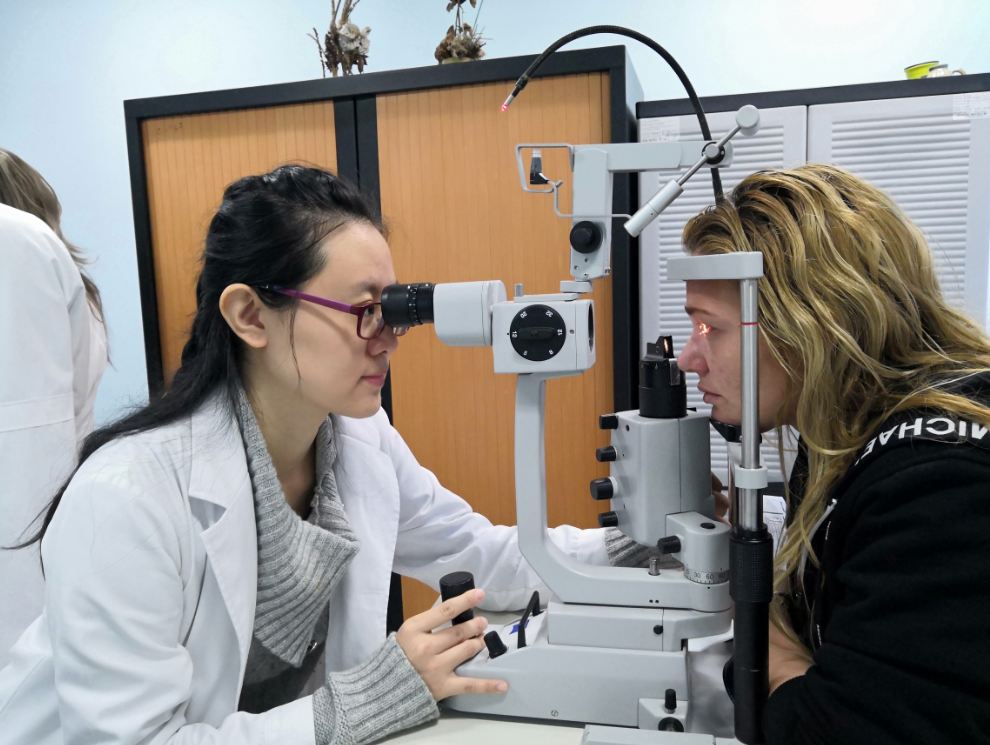Medical students warm to studies in Cuba
More than 3,000 Chinese students from 12 central and western provinces have studied in the country with a Cuban government scholarship. They have since gone on to become doctors and nurses back home.
Li (L) examines a patient at the ophthalmology institution. [Photo provided to China Daily]
Li is also thinking about becoming a doctor at home after finishing postgraduate studies in Cuba. "But if my country needs me to work in Cuba, I will never refuse," she added. "There are many practices we can learn from Cuba."
The State-run healthcare system has earned Cuba praise over the years. Despite scarce resources and a less-developed economy, the country has one of the world's lowest infant mortality rates – just slightly below that of the United States. Industry statistics show that its life expectancy is 77.5 years, one of the world's highest. The nation has 30,000 family doctors and 500 local clinics, and every Cuban sees a doctor at least once a year.
Cuba is one of the few countries to offer its citizens free healthcare treatment and services. Although not wealthy or economically developed, the country spends half of the national budget on healthcare and education.
Chinese students enrolled in the program have also benefited from Cuba's free medical system.
Kou said a Chinese student, Zhou Kai, had a heart attack during his studies in Cuba. After Zhou's parents gave their approval, he underwent surgery at a local hospital. All the medical treatment, including rehabilitation, was free.
"All of us enjoy the same treatment as Cuban citizens, and our institution does its best to look after us," Kou added.
He believes that early emphasis on community-based primary care and prevention is the key to success.
"China should really learn from that," Kou said. "Promoting health knowledge and treating common illnesses in communities is an efficient method, with minimum cost."
The Cuban healthcare system starts at community level, where each neighborhood has a clinic with a doctor and a nurse. These doctor-nurse teams spend each morning in their neighborhood office seeing patients, and every afternoon they visit people based on need.


